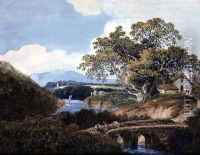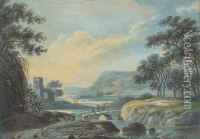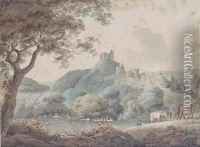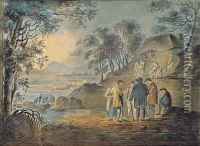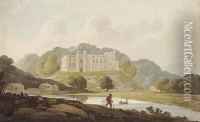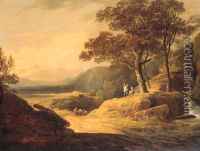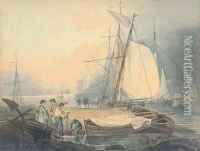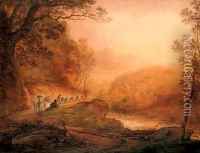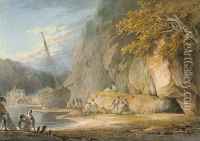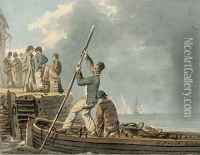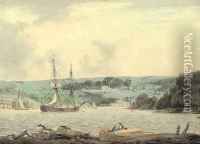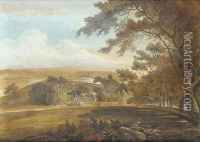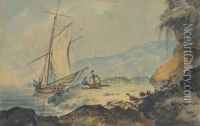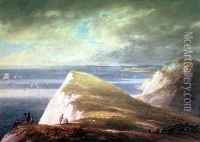William Payne Paintings
William Payne was an English watercolour painter and etcher who was active during the late 18th and early 19th centuries. Born in 1760, Payne is known for his development of new techniques within watercolour painting that significantly influenced the medium. He is particularly noted for introducing the 'Payne's Grey' colour, a blue-grey pigment which became a staple for watercolour artists.
Payne's early life is not well documented, but it is believed that he was originally from Devon. He started his career in the civil service but quickly turned to art. By the 1780s, he was in London, where he began to gain recognition for his landscape paintings which depicted English countryside scenes with a remarkable sense of atmosphere and light.
Throughout his career, William Payne exhibited works at the Royal Academy and the Society of Painters in Water Colours, which he was instrumental in founding. His innovative techniques, including the 'split-brush' technique which allowed for the creation of textured foliage, and his use of tinted papers, helped to expand the possibilities of watercolour painting during this period.
Payne's contributions to the art community were significant, and his teaching and methods were adopted by many contemporaries and successors, thereby influencing the direction of British watercolour art. Despite the popularity of his techniques, Payne himself did not achieve lasting fame and he was largely forgotten by the end of the 19th century.
William Payne's life after his active years as an artist is not well recorded, and he faded from the public eye before his death in 1830. Today, his work is appreciated by art historians and collectors who recognize his role in the development of watercolour painting in England. His paintings, characterized by their soft hues and serene landscapes, are held in various art collections and continue to be studied for their technical and aesthetic qualities.
